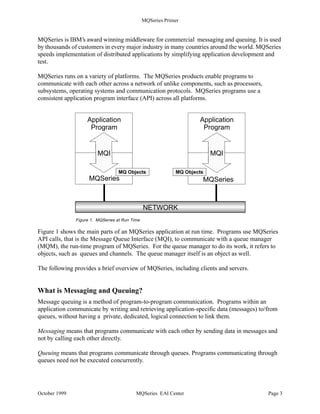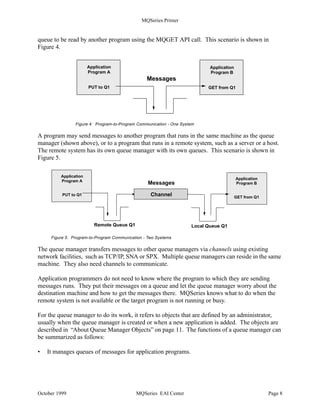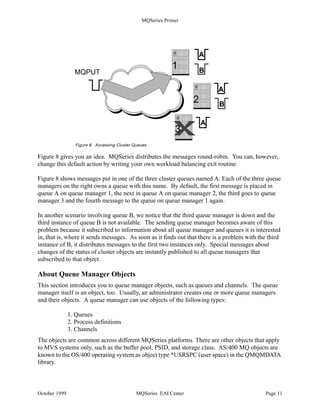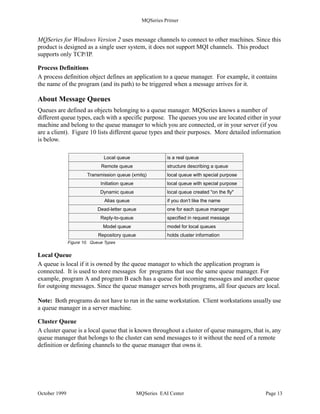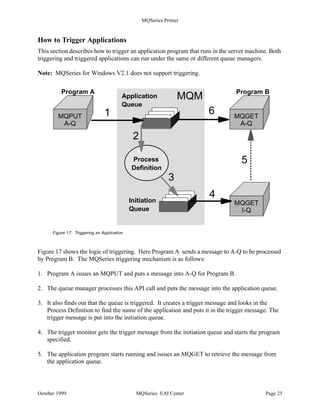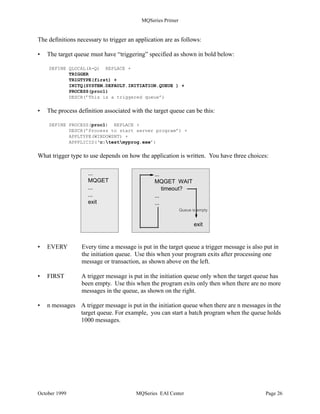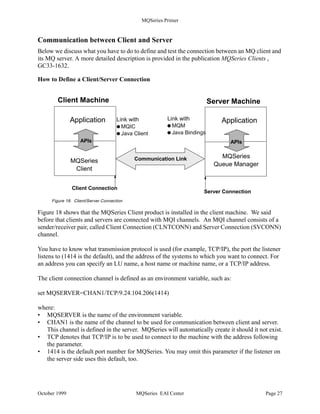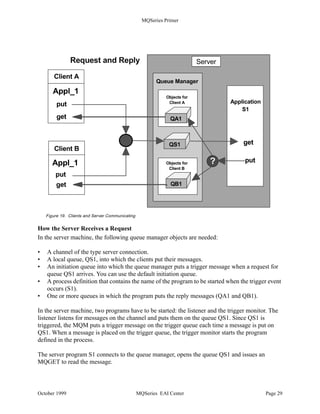MQSeries is IBM's middleware for messaging and queuing that allows programs to communicate asynchronously through message queues. It provides a consistent messaging interface that works across platforms. The queue manager is the core component that manages queues and messages, allowing programs to communicate without being aware of each other's locations. It handles message transport, segmentation, grouping and ensures reliable delivery. MQSeries supports clustering of queue managers to distribute workload and provide high availability.


